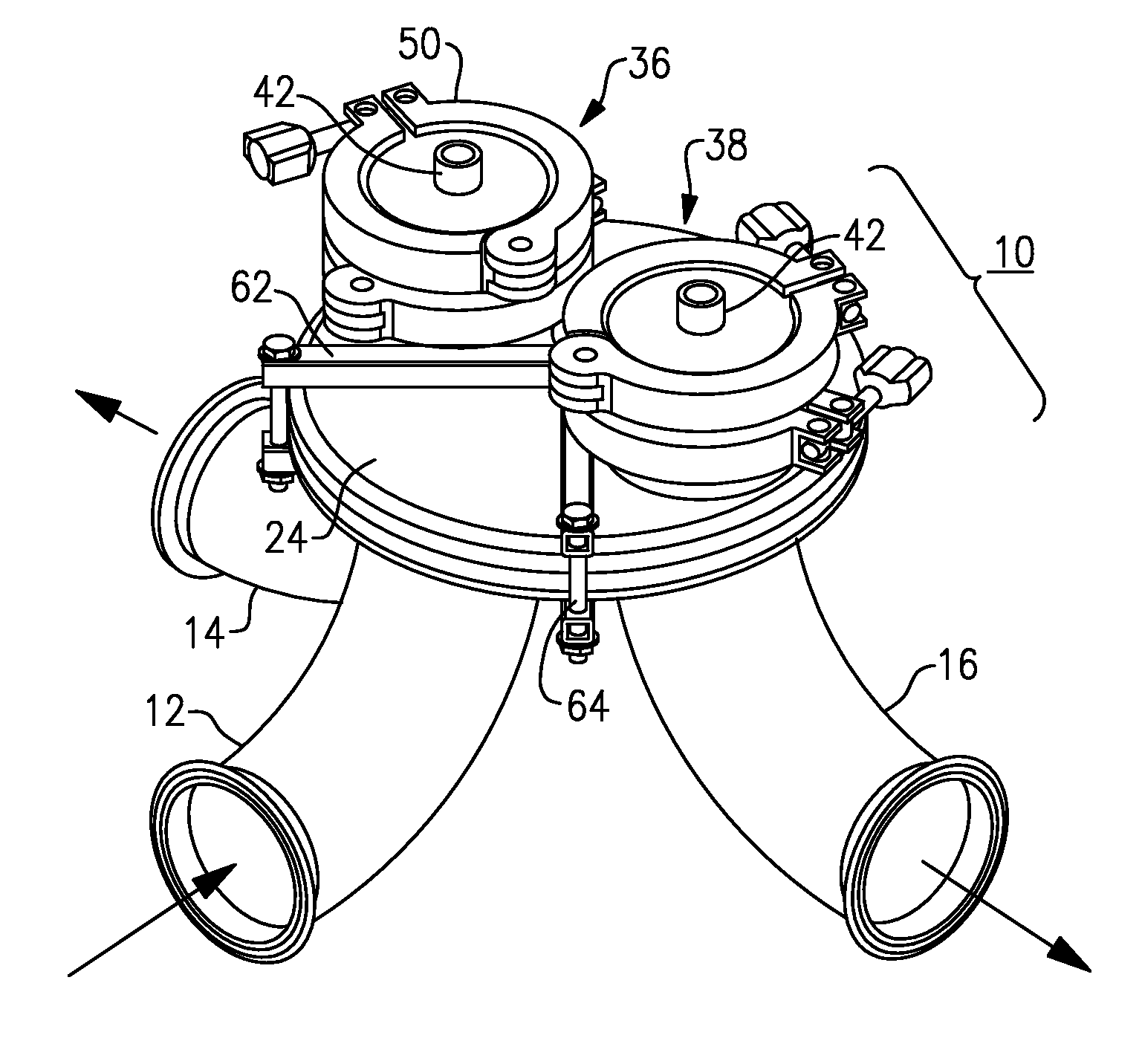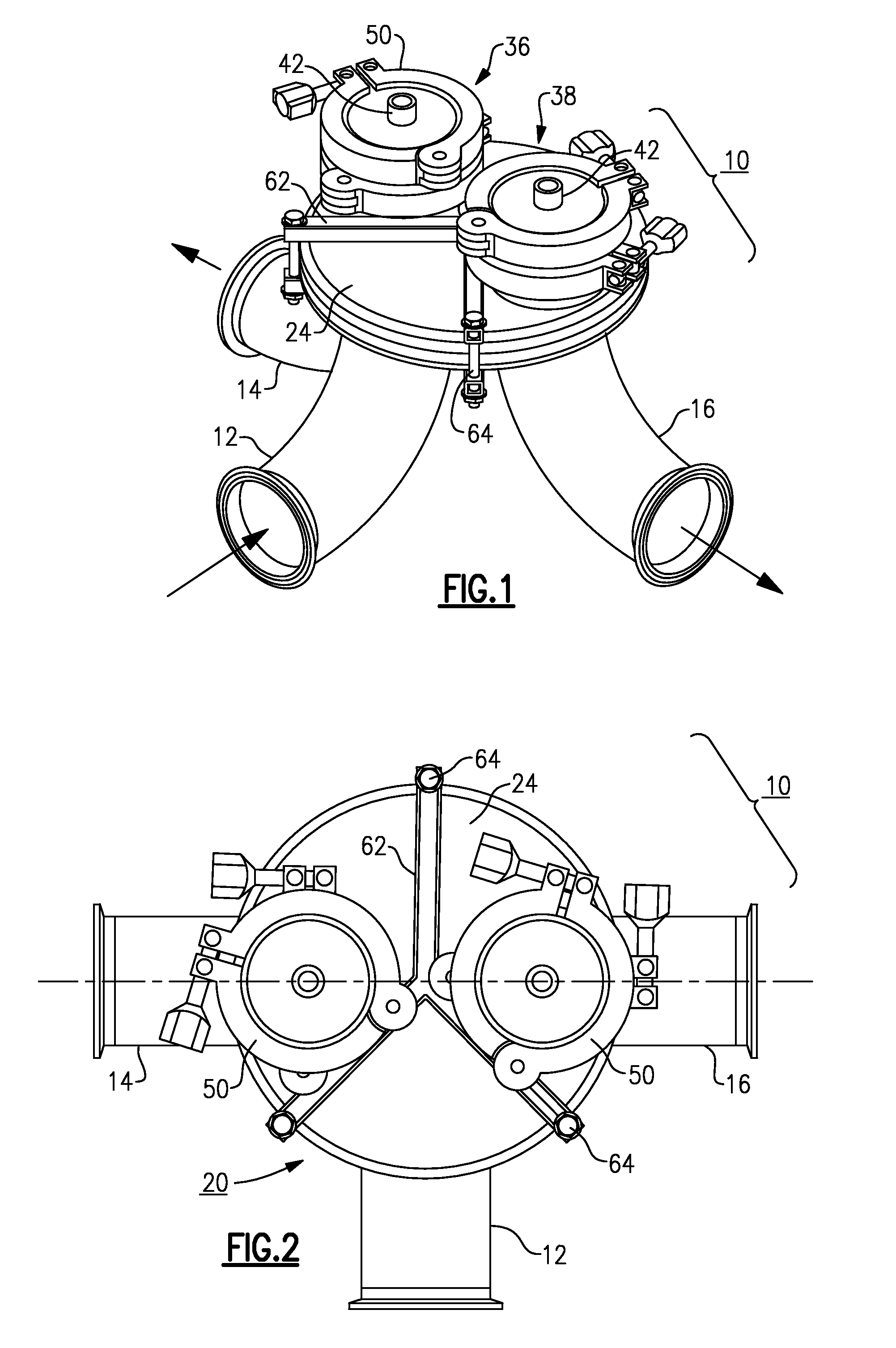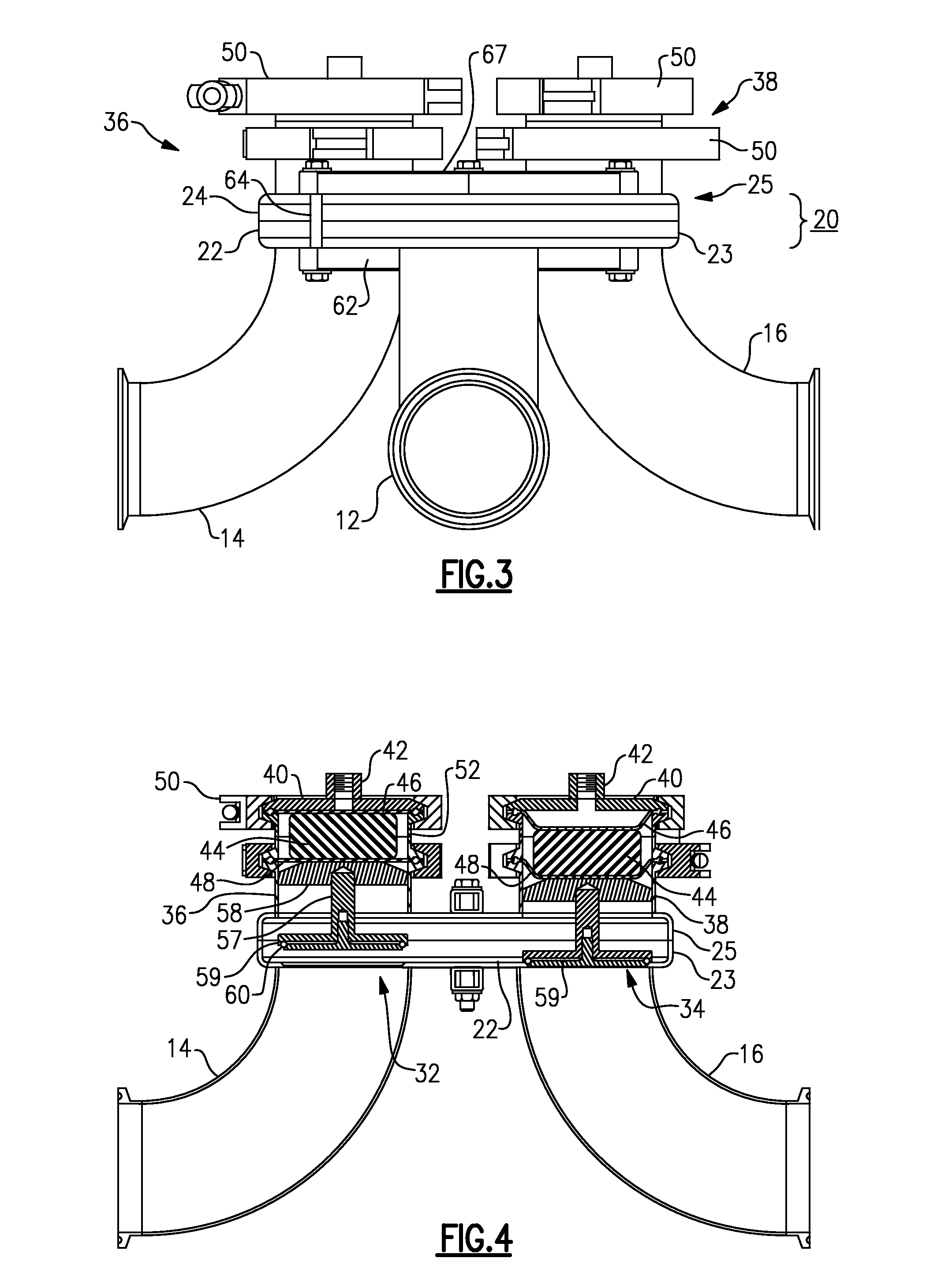Aseptic or sanitary diaphragm valve
a diaphragm valve and sanitary technology, applied in the direction of diaphragm valves, engine diaphragms, operating means/release devices of valves, etc., can solve the problems of significant capital expense, complex and difficult to repair and maintain sanitary valves used in dairy industry and other food processing industries, and achieve the effect of simple construction
- Summary
- Abstract
- Description
- Claims
- Application Information
AI Technical Summary
Benefits of technology
Problems solved by technology
Method used
Image
Examples
Embodiment Construction
[0033]With initial reference to the embodiment illustrated in FIGS. 1 to 5, an aseptic valve or sanitary valve 10 of the present invention may be employed on a tubular sanitary conduit, suitable for processing a dairy product, such as milk or ice cream mix, another edible product such as fruit juice, sauce or soup, or a pharmaceutical product for human or veterinary use. The valve 10 may be useful in an aseptic process, e.g., where UHT pasteurization is employed.
[0034]The aseptic or sanitary valve 10 of this embodiment has one inlet and two outlets, and serves to switch fluid flow from an inlet tube 12 between a first outlet tube 14 and a second outlet tube 16. Other embodiments of this valve may have two or more controlled outlets. A valve body 20 in this embodiment is made in a clamshell design, with a lower plate or disk 22 with a circumferential flange 23 and a mating upper plate or disk 24 with a circumferential flange 25. The upper and lower plates 22, 24 are spaced a predeter...
PUM
 Login to View More
Login to View More Abstract
Description
Claims
Application Information
 Login to View More
Login to View More - R&D
- Intellectual Property
- Life Sciences
- Materials
- Tech Scout
- Unparalleled Data Quality
- Higher Quality Content
- 60% Fewer Hallucinations
Browse by: Latest US Patents, China's latest patents, Technical Efficacy Thesaurus, Application Domain, Technology Topic, Popular Technical Reports.
© 2025 PatSnap. All rights reserved.Legal|Privacy policy|Modern Slavery Act Transparency Statement|Sitemap|About US| Contact US: help@patsnap.com



